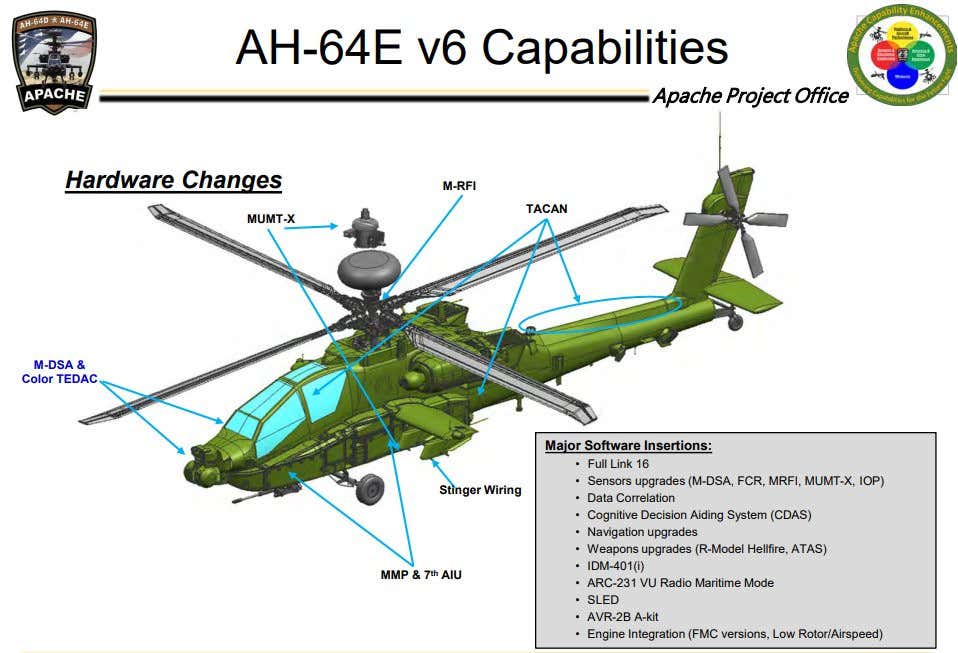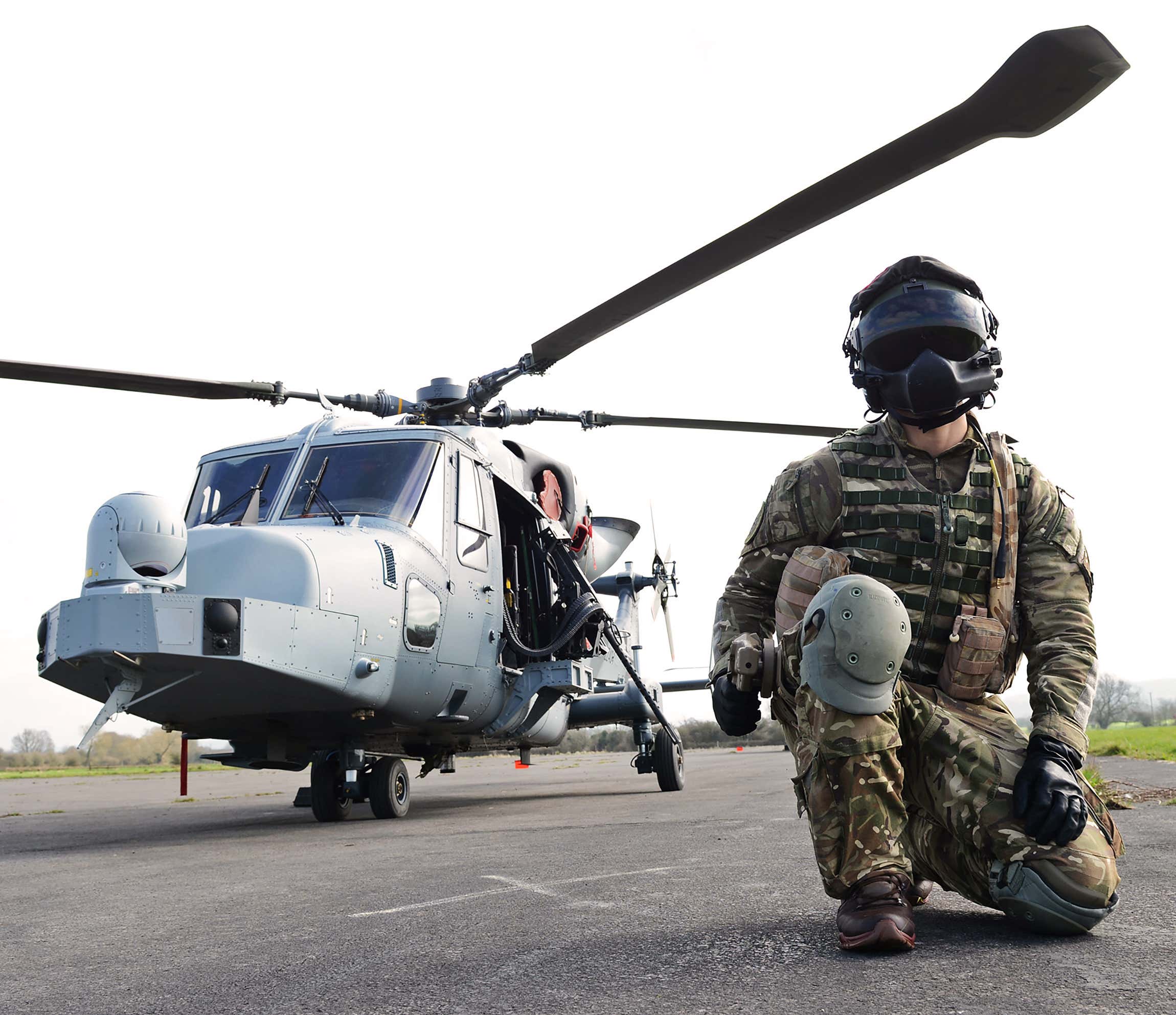Made in Mesa:
First AH-64E Apaches Arrive In UK, Will Serve As New Carriers’ Other Strike Capability
Part of Britain’s new-look attack helicopter force, the AH-64E gunships will also be able to team with drones.

A schematic diagram of the AH-64 components that have received an upgrade under Version 6.
Version 6 offers notable advantages over the initial blocks of AH-64Es and its emphasis on over-water combat is something that the British Army will likely have paid particular attention to. Among official plans for the future air wings of the Royal Navy’s two Queen Elizabeth class aircraft carriers is a so-called Littoral Manoeuvre setup that combines Apaches with a variety of assault transport and support helicopters. Since it’s also planned for the air wings to be tailored for combinations of Carrier Strike and Littoral Manoeuvre capabilities if required, it’s also possible that the new Apaches will eventually go to sea alongside the F-35B Lightning jet fighter, to provide a two-pronged offensive-oriented air complement . . .
The British Army’s plans call for the AH-64E to operate as an Attack Reconnaissance Team (ART) with the Wildcat AH1 within 1 Aviation Brigade. The Wildcat AH1 is the battlefield reconnaissance version of the Leonardo AW159 helicopter, 34 of which are in service and which can act as airborne forward air controllers, or FACs, directing fire from fast jets, naval and field artillery, as well as attack helicopters.

A British Army Air Corps door gunner poses alongside a Wildcat AH1 helicopter fitted with a 50-caliber Browning M3M machine gun.
Co-operative exercises involving Apache AH1s and Wildcat AH1s have included 2018 maneuvers at Aberporth, Wales, in which a Wildcat laser-designated a target for a pair of Apaches, which then engaged it using two Hellfire missiles and without using their own laser designators, helping prove the ART concept.
The reference to manned-unmanned teaming, which is a key part of the overall Version 6 package, suggests the British Army Version 6 AH-64E may be fitted with, or have provision for, the U.S. Army’s Manned-Unmanned Teaming-Extended (MUMT-X) system, which increases the range at which the helicopter can share data with drones.
The United Kingdom is increasingly looking to expand its UAS capabilities, including swarming drones. Recent trials conducted by Leonardo may also provide an indication of the types of UAS that the British Army’s AH-64E may be adapted to work with in the future. The British AH-64Es could also harness their manned-unmanned teaming ability to cooperate with the Royal Air Force’s forthcoming Protector drones, essentially mimicking the way that U.S. Army Apaches and MQ-1C Gray Eagles work together.
The last British Apache unit to deploy to Afghanistan flew top cover for the final withdrawal of British troops from Camp Bastion in October 2014. In the meantime, the British Army Apaches also went to war in Libya in 2011, as part of the NATO-led coalition.
In May 2017, the United Kingdom placed a $488.1-million Foreign Military Sales (FMS) order with Boeing, a modification of an existing deal, to remanufacture 38 Apache AH1s to AH-64E standard as part of a wider Lot 7-11 production run, as well as to procure three Longbow crew trainers and associated spares. This work was scheduled to be completed at the Boeing plant in Mesa, Arizona, by May 31, 2024.
Although there were rumors they might be dropped as a cost-saving measure, the remaining final 12 AH-64Es for the United Kingdom were eventually covered by a separate $565.5-million contract issued in December 2019, another modification of an existing FMS award, which included the rework of a total of 47 aircraft, including others for the Netherlands and the United Arab Emirates. The estimated completion date for this work is March 1, 2025.
By mid-2019, 16 Apache AH1s had been delivered to Mesa for the AH-64E remanufacture program and the first British E-model was flown from Mesa, Arizona, to the US Army facility at Redstone Army Airfield, Alabama, to begin testing, last summer



No comments:
Post a Comment